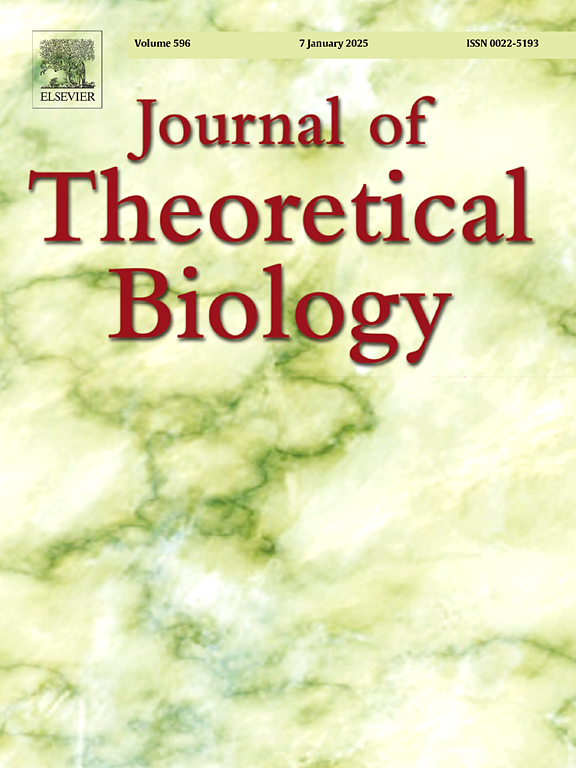An optimal network that promotes the spread of an advantageous variant in an SIR epidemic
IF 2
4区 数学
Q2 BIOLOGY
引用次数: 0
Abstract
In the course of epidemics, the pathogen may mutate to acquire a higher fitness. At the same time, such a mutant is automatically in an unfavorable position because the resident virus has a head start in accessing the pool of susceptible individuals. We considered a class of tunable small-world networks, where a parameter, (the rewiring probability), characterizes the prevalence of non-local connections, and we asked, whether the underlying network can influence the fate of a mutant virus. Under an SIR model, we considered two measures of mutant success: the expected height of the peak of mutant infected individuals, and the total number of recovered from mutant individuals at the end of the epidemic. Using these measures, we have found the existence of an optimal (for an advantageous mutant virus) rewiring probability that promotes a larger infected maximum and a larger total recovered population corresponding to the advantageous pathogen strain. This optimal rewiring probability decreases as mean degree and the infectivity of the wild type are increased, and it increases with the mutant advantage. The non-monotonic behavior of the advantageous mutant as a function of rewiring probability may shed light into some of the complex patterns in the size of mutant peaks experienced by different countries during the COVID-19 pandemic.
在SIR流行病中促进有利变异传播的最优网络。
在流行过程中,病原体可能发生突变以获得更高的适应度。与此同时,这样的突变体自动处于不利地位,因为常驻病毒在进入易感个体池方面具有领先优势。我们考虑了一类可调的小世界网络,其中参数p(重新布线概率)表征了非局部连接的普遍性,我们问,底层网络是否可以影响突变病毒的命运。在SIR模型下,我们考虑了突变成功的两个度量:突变感染个体的峰值的预期高度,以及在流行病结束时从突变个体中恢复的总数。利用这些措施,我们发现存在一个最优(对于有利的突变病毒)重新布线概率,它促进了更大的感染最大值和更大的总恢复种群,对应于有利的病原体菌株。这种最佳重新布线概率随着平均程度和野生型传染性的增加而降低,随着突变优势的增加而增加。优势突变体的非单调行为作为重新布线概率的函数,可能会揭示在COVID-19大流行期间不同国家经历的突变峰大小的一些复杂模式。
本文章由计算机程序翻译,如有差异,请以英文原文为准。
求助全文
约1分钟内获得全文
求助全文
来源期刊
CiteScore
4.20
自引率
5.00%
发文量
218
审稿时长
51 days
期刊介绍:
The Journal of Theoretical Biology is the leading forum for theoretical perspectives that give insight into biological processes. It covers a very wide range of topics and is of interest to biologists in many areas of research, including:
• Brain and Neuroscience
• Cancer Growth and Treatment
• Cell Biology
• Developmental Biology
• Ecology
• Evolution
• Immunology,
• Infectious and non-infectious Diseases,
• Mathematical, Computational, Biophysical and Statistical Modeling
• Microbiology, Molecular Biology, and Biochemistry
• Networks and Complex Systems
• Physiology
• Pharmacodynamics
• Animal Behavior and Game Theory
Acceptable papers are those that bear significant importance on the biology per se being presented, and not on the mathematical analysis. Papers that include some data or experimental material bearing on theory will be considered, including those that contain comparative study, statistical data analysis, mathematical proof, computer simulations, experiments, field observations, or even philosophical arguments, which are all methods to support or reject theoretical ideas. However, there should be a concerted effort to make papers intelligible to biologists in the chosen field.

 求助内容:
求助内容: 应助结果提醒方式:
应助结果提醒方式:


